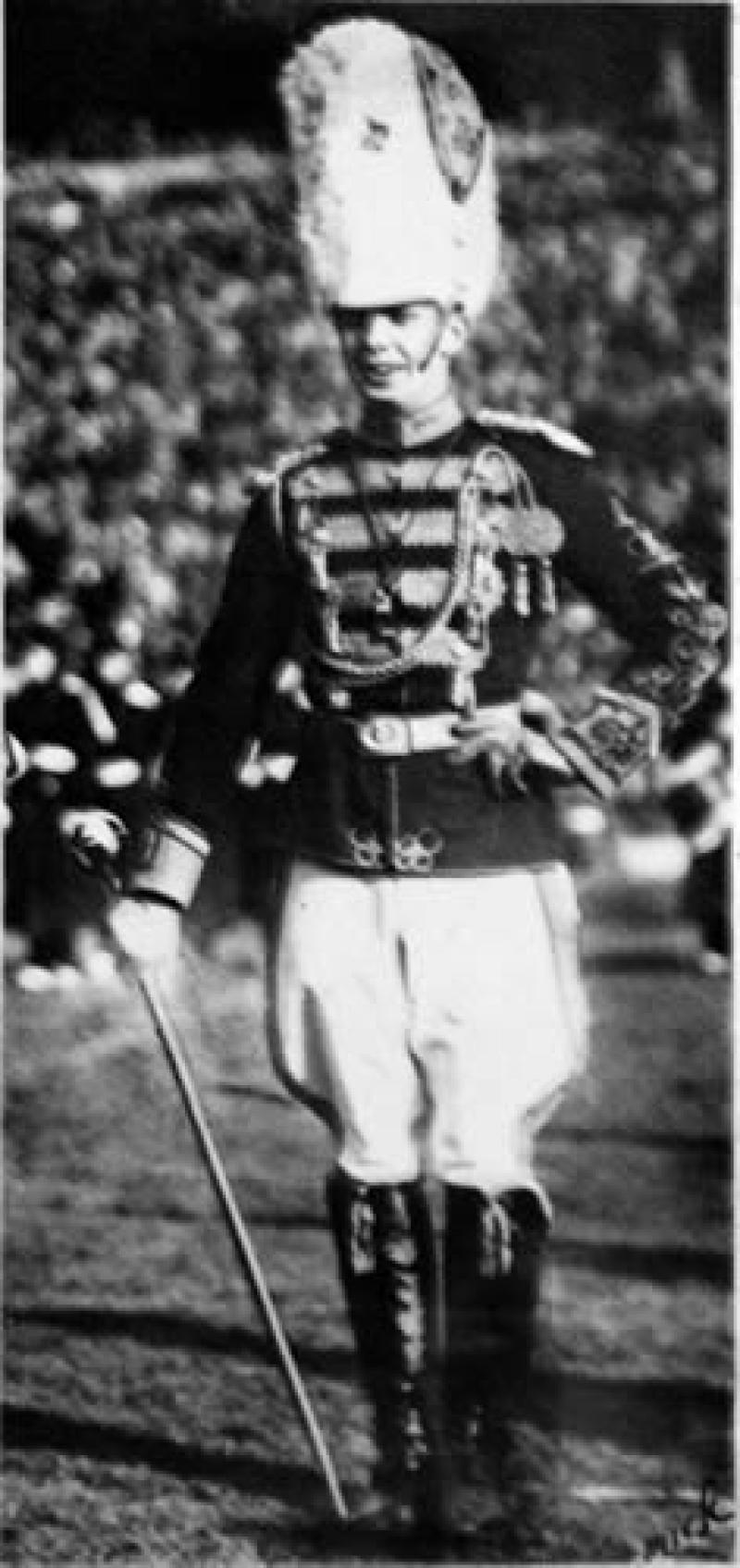William Knepper: 1928-1930

Determination and pride in accomplishment were two ingredients that landed William E. Knepper (OSUMB 1928-30) in the band.
"My trumpet playing wasn't good enough to satisfy Gus Bruder who was then band director. He relegated me to the drum and bugle corps. Then the University relegated the drum and bugle corps to the ash can, because we made too much noise. I went back to Gus to try and play the trumpet, but he said 'No . . . couldn't do that," said Knepper.
"In 1927 I pulled the big drum. It was on wheels. Somebody had to pull it. Incidentally, I lost it once in New York in a railway station. That takes some doing. Anyhow, the person most likely to succeed Bobby Hines was Jack Taylor, a drum major with a Dayton high school band. The baton he used was a little wooden stick that wasn't over 28 inches long — a peculiar shaped thing. He handled it and threw it around and spun it about like you would an Indian club. It was painted gray. Jack was out for the drum majorship and was pretty certain to get it. I wanted to stay with the band. I wasn't enjoying the drum, so I went down and got a baton and cut it down to the size I wanted — it was a 52-inch one when I got it. I cut off the band end and moved the ball down so it would fit on the shaft. It had a wooden shaft inside it and I used that baton to practice with. When I started to practice, the only thing I knew about handling a baton was what I had seen Bobby Hines do — and Bobby Hines was good," said Knepper.
"When I got the baton cut down to the size I wanted, I began to run out of ideas, so I talked to Fred Schenck, my next door neighbor, who ran the Columbus Sign Company. He had been in vaudeville years before and had a rifle-twirling act. He took a big rifle with a bayonet on one end which made it about six feet long, and he used to twirl that thing and throw it all over the stage. Fred came out in my back yard and gave me a lot of lessons. He would twirl that rifle with the bayonet and I would try to do the same thing with the baton …that was the way I learned to do most of the twirls I did," Knepper said.
The new role of the drum major required all the skills of the past, and a new dimension was developing that had greater emphasis on entertainment, especially during halftime performances. New equipment was a natural consequence of this trend. The first all metal 42-inch baton was designed and custom made to fit Knepper's needs. The baton was much faster, lighter to throw, and flashier than any baton known to exist at that time.
Dr. Eugene Weigel, band director, said in 1969, "Knepper was the drum major that I inherited when I came in 1929 ... He was the greatest drum major I had in my ten years as director. Not that he had the twirling techniques that some of his followers had, but he was a field general par excellence. He had a disciplined mind and he was dependable. He never flubbed any direction he was given."
